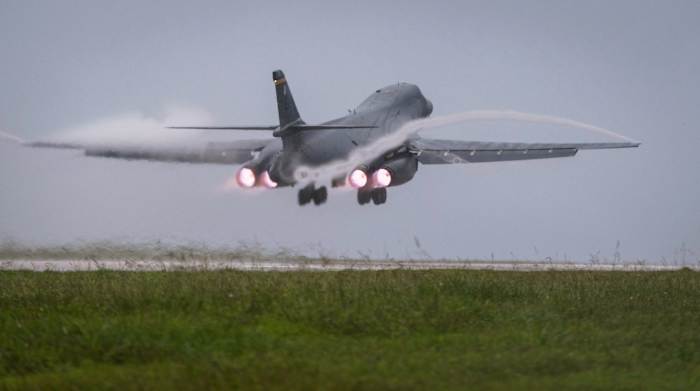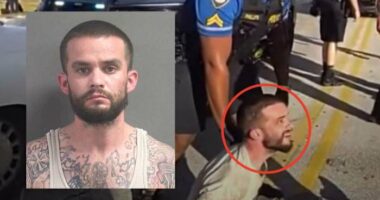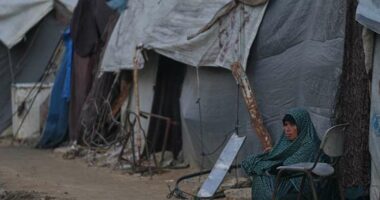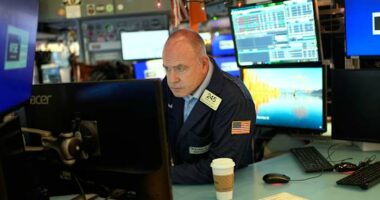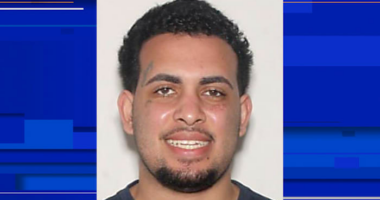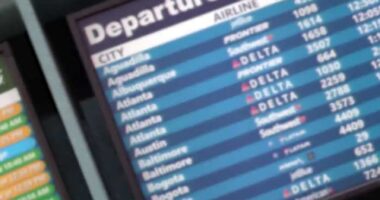Share this @internewscast.com

WASHINGTON – In a display of military might, the U.S. sent two supersonic heavy bombers to the vicinity of Venezuela’s coastline on Thursday. This move came shortly after a previous mission involving similar aircraft, aimed at simulating an assault as part of a training exercise.
The U.S. has notably increased its military presence in the Caribbean Sea and near Venezuelan waters, fueling rumors that President Donald Trump might be contemplating an effort to unseat Venezuelan President Nicolás Maduro, who faces narcoterrorism charges in the United States.
These developments are further highlighted by ongoing U.S. military operations targeting vessels suspected of drug trafficking near Venezuela since early September, which have been described as lethal strikes by the Trump administration.
According to flight tracking information, two B-1 Lancer bombers launched from Dyess Air Force Base in Texas and navigated through the Caribbean to reach the Venezuelan coast on Thursday. A U.S. official, requesting anonymity due to the sensitive nature of military activities, confirmed that a B-1 training mission took place over the Caribbean.
The B-1 Lancer stands out for its ability to carry a larger payload of bombs than any other aircraft in the U.S. arsenal.
Last week, a similar operation was conducted using the slower B-52 Stratofortress bombers. These bombers were accompanied by Marine Corps F-35B stealth fighters, stationed in Puerto Rico, to execute what the Pentagon described as a “bomber attack demo,” as depicted in online photographs.
When Trump was asked about Thursday’s B-1 flight and if it was meant to ramp up military pressure on Venezuela, he said, “it’s false, but we’re not happy with Venezuela for a lot of reasons. Drugs being one of them.”
The U.S. force in the Caribbean includes eight warships, P-8 maritime patrol aircraft, MQ-9 Reaper drones and an F-35 fighter squadron. A submarine has also been confirmed to be operating in the waters off South America.
Trump on Wednesday said he has the “legal authority” to carry out the strikes on the alleged drug-carrying boats and suggested similar strikes could be done on land.
“We will hit them very hard when they come in by land,” Trump told reporters in the Oval Office. “We’re totally prepared to do that. And we’ll probably go back to Congress and explain exactly what we’re doing when we come to the land.”
Defense Secretary Pete Hegseth said Wednesday that the military had conducted its ninth strike, killing three people in the eastern Pacific Ocean. It followed a strike Tuesday night, also in the eastern Pacific, that killed two people and brought the overall death toll from the strikes to at least 37.
The latest pair of strikes expanded the Trump administration’s campaign against drug trafficking in South America from the waters of the Caribbean to the eastern Pacific.
Hegseth has drawn a direct comparison between the war on terrorism that the U.S. declared after the Sept. 11, 2001, attacks and the Trump administration’s crackdown.
“Our message to these foreign terrorist organizations is we will treat you like we have treated al-Qaeda,” Hegseth told reporters on Thursday at the White House.
“We will find you, we will map your networks, we will hunt you down, and we will kill you,” he added.
Copyright 2025 The Associated Press. All rights reserved. This material may not be published, broadcast, rewritten or redistributed without permission.
